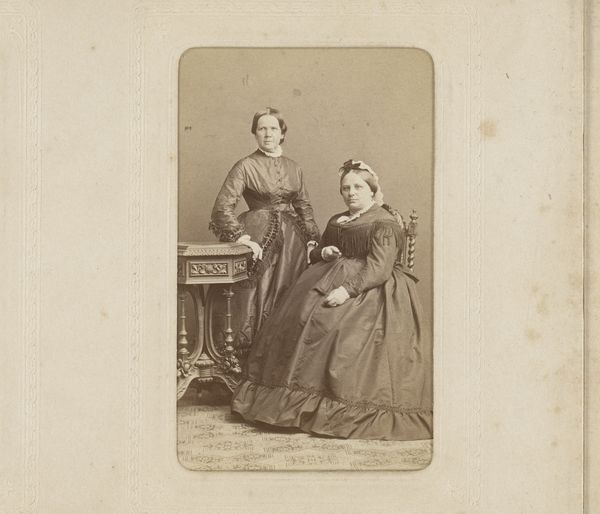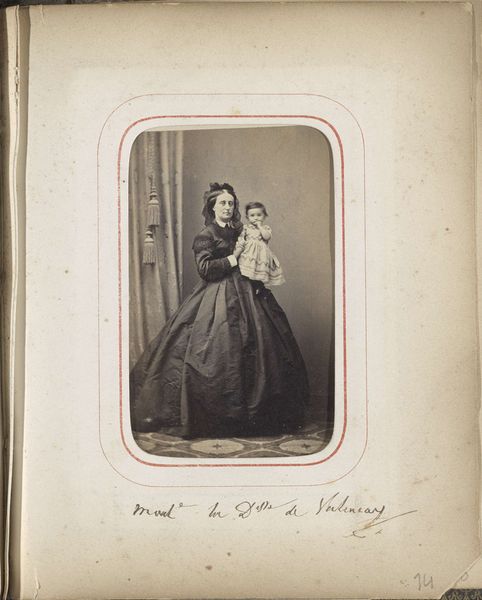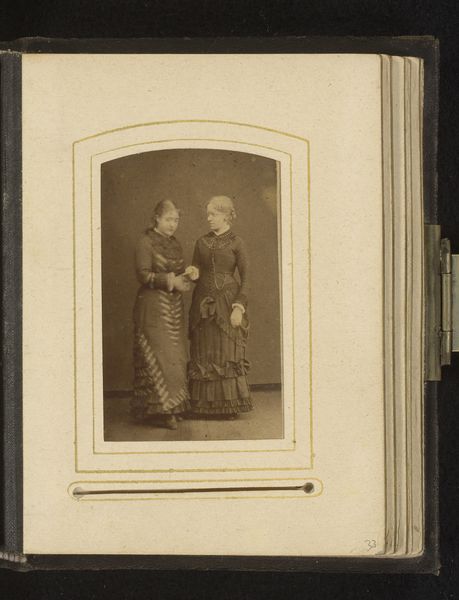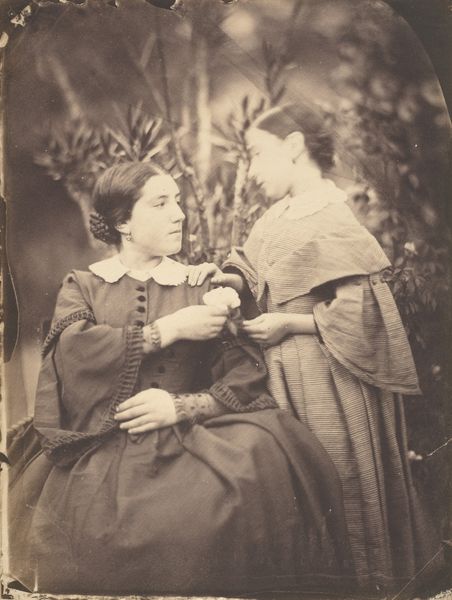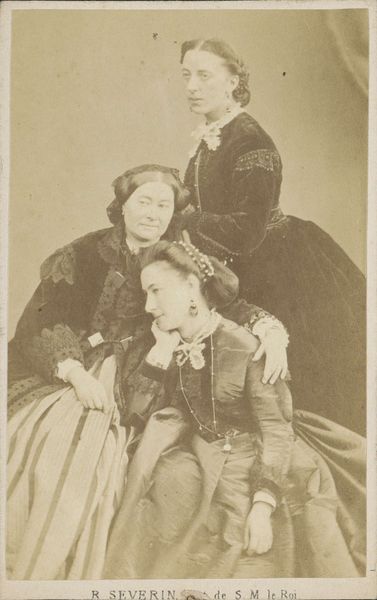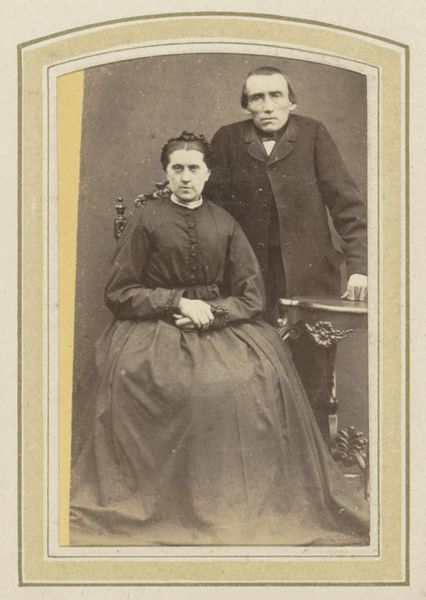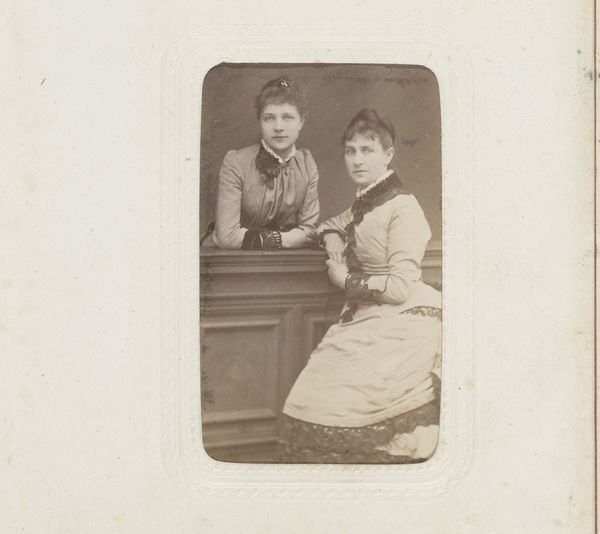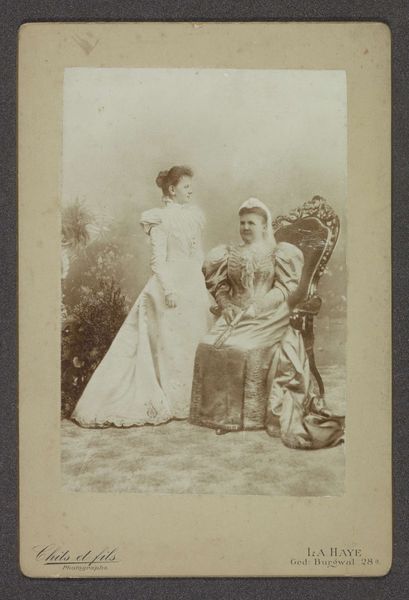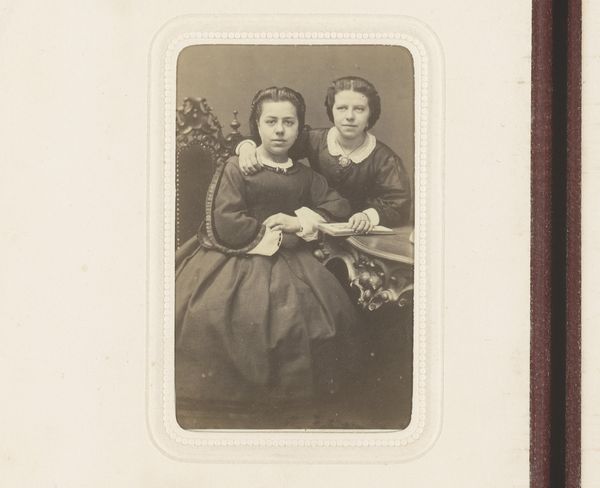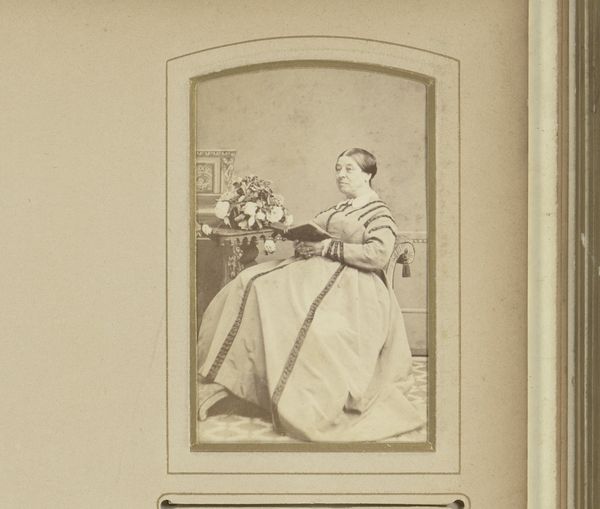
photography, albumen-print
#
portrait
#
photography
#
albumen-print
Dimensions: height 85 mm, width 52 mm, height 102 mm, width 60 mm
Copyright: Rijks Museum: Open Domain
Curator: Disdéri & Co.'s "Portret van twee zusjes De Beaulaincourt," created around 1860 to 1865, showcases two young girls. The print is albumen, part of a larger photographic album. What are your immediate thoughts? Editor: Austere. And intimate, but from a distance. There’s something melancholy in their poses. They stand stiffly, not quite touching. Their dresses, voluminous dark shapes against the pale ground, amplify that solemnity. Curator: The albumen print process itself contributed to this feeling, I think. It required skilled labor to prepare the glass plate negatives and coat the paper. Disdéri industrialized this to produce a massive volume, and it would have been quite a spectacle of labor. Each image carefully posed, carefully printed, part of a larger system of material consumption and cultural production. Editor: Industrializing intimacy... How odd! The image appears very handmade to our modern eyes, especially when you compare it with the deluge of digital snapshots we see now. Look at the details: the subtle variations in tone, the almost velvety texture created by the albumen. Did this somehow commodify sentimentality in a way that allowed those feelings to reach more families? Curator: Exactly. Portraiture before this was only for the elites who could commission painted portraits, right? And these cartes-de-visite, these photographs mounted on cards, suddenly make images accessible to a broader middle class. The consumption of such photos was intrinsically connected to that rise of consumerism. Editor: Still, it makes you wonder about the girls themselves. What was it like to sit there, holding a book you may or may not read, trying to suppress your giggles under the photographer's stern eye? Photography offered people new modes of memorializing. What did it replace in their lives, or supplement? I’m struck by the very human desire to hold on to these ephemeral moments with our loved ones. Even through industrial processes, some feelings, and memories are able to be transferred from artwork to spectator across centuries. Curator: Agreed, even though their poses feel rigid to us, they were pushing back at the technology’s limitations while capturing something universal in the familial dynamic. And I do see in their faces a certain sisterly affection despite everything else you note that may seem rigid. Editor: It certainly adds another layer of depth when you remember this photograph required all those hours of skilled labor. Thanks for shedding light on that today!
Comments
No comments
Be the first to comment and join the conversation on the ultimate creative platform.
